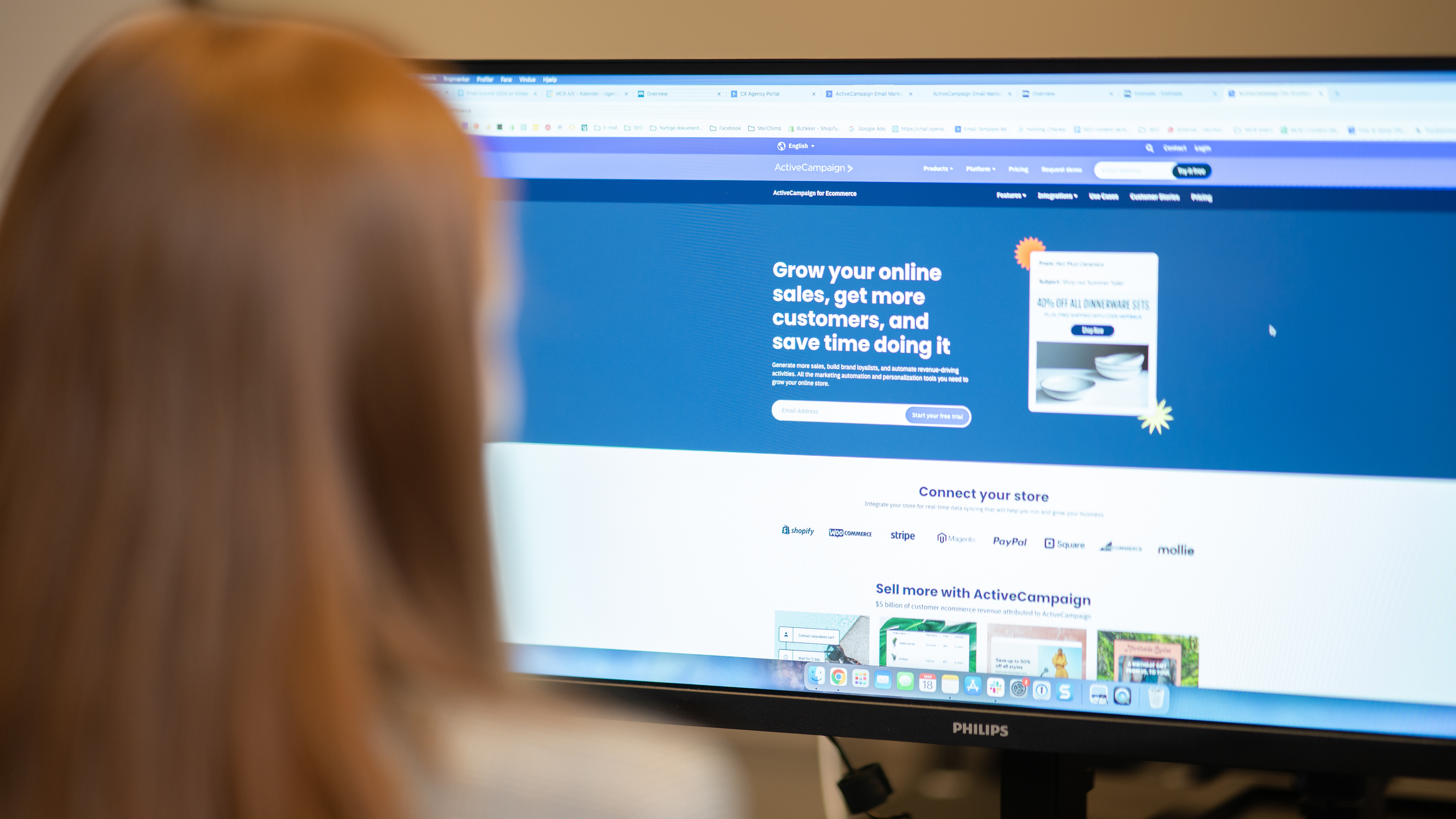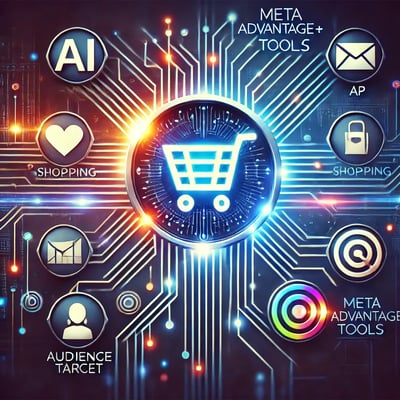
E-mail Deliverability Guide - Best Practices
Emails are still one of the most effective ways to reach customers and potential clients, so it is crucial to ensure that your emails actually reach the recipients' inboxes. Unfortunately, it's not always as simple as pressing 'send'. With increasing amounts of spam and strict filters from email providers, ensuring a high delivery rate can be challenging.
What is email deliverability? And why should it be a part of my email marketing?
Email deliverability is about the ability to get your emails delivered to recipients' inboxes. It's not just about sending an email, but about ensuring it actually reaches the intended destination without ending up in the spam or junk folder. This is crucial for any successful email marketing campaign, as even the most engaging and well-written emails are worthless if they are not seen by the recipients.
There are a number of factors that affect your email deliverability rate. You might have heard of sender score and authentication technologies like SPF, DKIM, and DMARC. And perhaps you've also heard about the importance of having an active and clean email list?
These are some of the more technical measures you should be aware of.
However, everything from the quality of the email content and design to the frequency of sending and using proper procedures when collecting an email address are also significant factors to consider. To achieve high email deliverability, it is important to have a clear and strategic approach to email marketing that focuses on building and maintaining a good reputation as a sender.
An essential part of this is understanding recipients' behavior and preferences and implementing best practices for segmentation and targeting. Through continuous monitoring and adjustment of your email strategy, you can improve the delivery rate and ensure that emails reach their intended recipients, ultimately strengthening communication and relationships with them.
Why is it important to manage my email deliverability when I want to send emails?
Managing email deliverability is crucial for any business that uses email marketing as part of their communication strategy – and it’s something everyone should be doing!
Email is perhaps the most important marketing channel.
It is almost exclusively based on first-party data – information that customers have given you directly, which is something other channels struggle to obtain. This enables you to create emails that are more personal and relevant, increasing the chances of engagement and conversion.
At the same time, email marketing is known for having the highest ROI (Return on Investment) compared to other marketing channels. This means that every krone invested in email marketing can potentially generate a significantly higher return. Often, this is because there is only a minimal expense associated with using the email system, and the sales attributed to your newsletters can be substantial.
If your emails do not reach the recipients' inboxes, you miss out on valuable opportunities to engage customers, increase sales, and strengthen your brand loyalty. Issues with email deliverability can also damage your brand's reputation. If your emails repeatedly end up in spam folders, it can create a negative perception among recipients and email providers, which can further reduce your future deliverability.
It is a vicious cycle, and it can be challenging to break out of it!
Good email deliverability also contributes to more precise and reliable data about your campaigns. When your emails reach the recipients, you get valid insights into open and click rates, enabling you to optimize your future email strategies and create more targeted and effective campaigns.
By achieving high email deliverability, you will experience immediate effects as your emails land in inboxes, but also long-term benefits as you can use the collected knowledge critically in your business strategies.
How do I improve my email deliverability? And how do I get my messages out to more email addresses?
Improving your email deliverability rate requires a combination of technical measures and strategic actions.
Here are some practical steps you can follow to ensure that your emails reach recipients' inboxes:
E-mail authentication
Before diving into anything else, it is important to set up authentication technologies. Google and Yahoo require you as the sender to have set up both SPF, DKIM, and DMARC before they will even deliver your emails to recipients using their email inboxes.
For example, Gmail focuses heavily on legitimate emails and verifying their validity.

The three types of authentication methods add several layers of security to your emails.
1. SPF (Sender Policy Framework) prevents email spoofing and unauthorized senders from sending emails on behalf of your company’s domain. SPF records consist of a list of verified senders for your domain, which can be looked up and retrieved by receiving servers like Gmail to approve email delivery.
2. DKIM (DomainKeys Identified Mail) record is text inserted into your DNS. It contains a 'public key' that mail servers use to verify that the content has not been altered by a third party. If the signature is approved, the email will be delivered to the recipient’s inbox. If not, the email will be delivered to a spam folder.
3. DMARC (Domain-based Message Authentication Reporting & Conformance) is a security protocol built on top of SPF and DKIM. DMARC uses SPF and DKIM to allow senders to specify how their emails should be handled if they are not approved by SPF or DKIM.
In this case, you have three options (this is called a DMARC policy):
- p=none (nothing happens – the email is delivered to the recipient anyway)
- p=quarantine (the email is delivered to the recipient's spam folder)
- p=reject (the email is blocked and NOT delivered to the recipient)
Spam rate
Your spam rate must be kept below 0.1-0.3% to avoid a generally poor reputation.
Spam complaints are almost unavoidable. Recipients may have forgotten that they signed up for your newsletter, or they may have difficulty finding your unsubscribe link. It can be a temporary issue, but it can also be more extensive, causing a general negative impact.
Here are a few tips on how to prevent recipients from clicking the spam button:
- Make it clear where the recipient can unsubscribe. Most people are used to being able to unsubscribe at the bottom of the email.
- Include text in your footer that describes where the recipient signed up for the list/newsletter.
- Keep the content relevant and personalized.
Be consistent with your frequency
Sending regular newsletters at the same frequency sends a positive signal to email clients that you are a trustworthy sender.
Cleanup
One of the most important factors for a good deliverability rate is list hygiene! Make sure to maintain good list hygiene by regularly removing inactive contacts and contacts that bounce.
When you clean up your email list, you can also avoid spam traps, and your deliverability automatically improves by only sending emails to engaged recipients.
A spam trap involves email addresses that identify 'bad' senders. They are created by anti-spam organizations to catch spammers and companies that do not follow email best practices. If a spam trap email address ends up on your list and you send to it, it will be the quickest way to end up on one of the anti-spam organizations' blacklists – and that certainly does not help your deliverability.
Although it can be challenging to delete contacts that you have spent time and resources collecting, inactive contacts have little to no value.
Most email systems base their pricing on the number of subscribers, meaning you pay for people who are not interested in your business. Additionally, sending newsletters to contacts who never interact with your emails harms your email deliverability. It can also distort your performance data if a large part of your subscriber base consists of inactive contacts or email addresses that are no longer in use.
So, better to have a few active contacts than many inactive ones.
Consider setting up an automation flow (an automated email series) that takes care of the cleanup. This allows you to focus on the fun parts and let the flow handle the tedious (but necessary) cleanup work.
Additionally, a win-back flow can be beneficial, aiming to reactivate inactive subscribers before they end up in your cleanup flow.
Monitoring
Keep an eye on your IP and sender reputation. This gives a good indication of how email clients view you as a sender. It also provides an overview of spam rates and other useful functionalities.
I recommend using Google Postmaster to monitor your IP and sender reputation.
You can use MX Toolbox to check if your domain and IP are blacklisted.
If your domain is blacklisted, you can request to have it removed on the respective organization's website.
/Louise%20F%C3%A6rk.png?width=100&height=100&name=Louise%20F%C3%A6rk.png)
Louise Færk,
E-mail Marketing Specialist AT MCB
Marketing and Transactional Emails
It is important to separate marketing emails from transactional emails, as marketing emails have a lower open rate, which can affect your domain reputation. If you send both types of emails from the same domain, it can create delivery problems for your transactional emails.
Use subdomains to separate them.
For example, if you send your newsletters from the email address 'info@mycompany.com', you should have a subdomain such as 'info@web.mycompany.com' from which order confirmations and similar emails are sent.
Design and Subject Lines
Focus on design and grammatically correct subject lines to avoid creating spam-like content.
You should consider the following for your content:
- Avoid creating spam-like content such as attaching files.
- Do not use spammy words in the subject line. Spammy words include terms such as: 100% free, best price, bonus, buy, cash, click here, discount, earn money, prize, etc.
- Do not have content that only consists of images. Always use a healthy text-to-image ratio, such as 65% text and 35% images, as many email clients will consider your email spam if it primarily consists of images.
- Use as few links as possible.
- Add alt-text to all images.
Avoid using large image files as they affect the loading of the email. Use tools like TinyPNG to reduce your image file size.
Dobbelt opt-in or CAPTCHA
Double opt-in is a process where a user first signs up for an email list and then must confirm their subscription through the registered email address before the user is officially added to the list and can receive your emails.
Most email clients consider double opt-in as best practice and ensure that subscriptions to your list are genuine. This also helps you avoid spam sign-ups and the risk of getting spam traps on your list.
Engage your recipients
You cannot do everything yourself. To boost deliverability rate and sender reputation while sending positive signals to email clients, your recipients should help as well.
You should get them to:
- Reply to your emails or newsletters
- Provide feedback via your emails
- Move emails from spam/junk to the inbox or mark emails as 'NOT SPAM'
- Add you to their address book
Your email expert in Denmark
At MCB, we not only assist our partners with email marketing related to sending newsletters and the content they should include.
The work also requires deeper insight into areas such as setting up automations, data, tracking, integrations, analysis, full utilization of available email marketing tools, design, and all the techniques that give you the best handle on perhaps the most important marketing channel – including deliverability.
We have several years of experience with email marketing automation for both the B2B and B2C segments – and thus both large and small businesses. Our partners span a wide range, from retail and beauty to food and education, including Easis, Friluftsland, Livingshop, Lightpartner, AMU SYD, and many more.
And many of these use different systems. We have made a comparison of the two largest here.
Therefore, at MCB, we are certified partners with, among others, ActiveCampaign, Klaviyo, HubSpot, and MailChimp.

.png)













